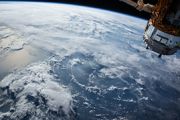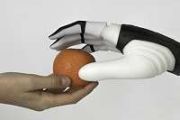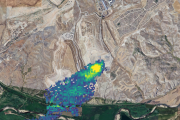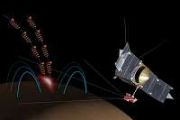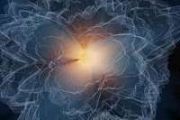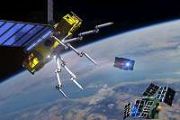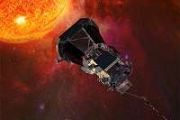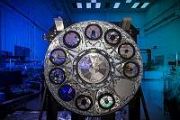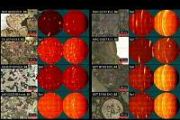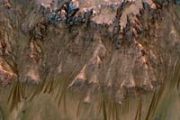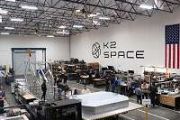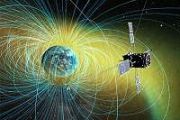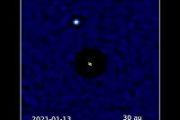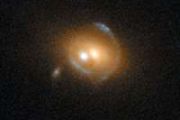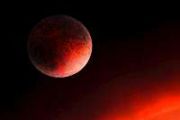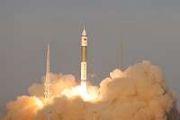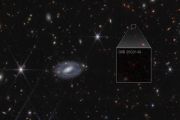
Copernical Team
Kacific enables mobile operators to provide better service to customers
 Kacific Broadband Satellites has introduced the first Ka-band Mobile Backhaul service for Internet Service Providers (ISPs) and telecom operators in Southeast Asia and the Pacific. This will allow operators to extend their network's range in remote and difficult areas and provide them with an effective way of easing congestion in high-demand urban environments.
Mobile Backhaul is part of K
Kacific Broadband Satellites has introduced the first Ka-band Mobile Backhaul service for Internet Service Providers (ISPs) and telecom operators in Southeast Asia and the Pacific. This will allow operators to extend their network's range in remote and difficult areas and provide them with an effective way of easing congestion in high-demand urban environments.
Mobile Backhaul is part of K Knight Sky LLC joins NIC4 to expand critical connectivity solutions for globally
 NIC4, a division of Network Innovations, Inc., announces the acquisition of U.S. government contractor, Knight Sky LLC. The acquisition will effectively combine the expertise of both companies, enhancing the development and delivery of agile, secure and mission critical connectivity solutions for the collective clients of each organization.
NIC4 will complement the existing Knight Sky mana
NIC4, a division of Network Innovations, Inc., announces the acquisition of U.S. government contractor, Knight Sky LLC. The acquisition will effectively combine the expertise of both companies, enhancing the development and delivery of agile, secure and mission critical connectivity solutions for the collective clients of each organization.
NIC4 will complement the existing Knight Sky mana First LoRa message bounced off the moon
 For the first time ever we bounced a LoRa message off the moon on October 5th 2021, using the Dwingeloo radio telescope. This first was achieved by a team consisting of Jan van Muijlwijk (CAMRAS, PA3FXB), Tammo Jan Dijkema (CAMRAS), Frank Zeppenfeldt (ESA, PD0AP) and Thomas Telkamp (Lacuna Space, PA8Z). The signal traveled an amazing distance of 730,360 km, which to our knowledge is the furthest
For the first time ever we bounced a LoRa message off the moon on October 5th 2021, using the Dwingeloo radio telescope. This first was achieved by a team consisting of Jan van Muijlwijk (CAMRAS, PA3FXB), Tammo Jan Dijkema (CAMRAS), Frank Zeppenfeldt (ESA, PD0AP) and Thomas Telkamp (Lacuna Space, PA8Z). The signal traveled an amazing distance of 730,360 km, which to our knowledge is the furthest NASA starts loading fuel for James Webb Space Telescope launch
 NASA is loading fuel and oxidizer into the James Webb Space Telescope in the Guiana Space Center ahead of its scheduled December 22 launch.
Teams at the space center in French Guiana are loading 63 gallons of fuel and oxidizer into the $9.7 billion telescope, which is the largest and most powerful telescope ever conceived.
The Webb telescope, an international partnership among NA
NASA is loading fuel and oxidizer into the James Webb Space Telescope in the Guiana Space Center ahead of its scheduled December 22 launch.
Teams at the space center in French Guiana are loading 63 gallons of fuel and oxidizer into the $9.7 billion telescope, which is the largest and most powerful telescope ever conceived.
The Webb telescope, an international partnership among NA Testing confirms Webb Telescope on track for targeted Dec 22 Launch
 Engineering teams have completed additional testing confirming NASA's James Webb Space Telescope is ready for flight, and launch preparations are resuming toward Webb's target launch date of Wednesday, Dec. 22, at 7:20 a.m. EST.
Additional testing was conducted this week to ensure the observatory's health following an incident that occurred when the release of a clamp band caused a vibrati
Engineering teams have completed additional testing confirming NASA's James Webb Space Telescope is ready for flight, and launch preparations are resuming toward Webb's target launch date of Wednesday, Dec. 22, at 7:20 a.m. EST.
Additional testing was conducted this week to ensure the observatory's health following an incident that occurred when the release of a clamp band caused a vibrati Alaska scientist reveals cause of lost magnetism at meteorite site
 A University of Alaska Fairbanks scientist has discovered a method for detecting and better defining meteorite impact sites that have long lost their tell-tale craters. The discovery could further the study of not only Earth's geology but also that of other bodies in our solar system.
The key, according to work by associate research professor Gunther Kletetschka at the UAF Geophysical Inst
A University of Alaska Fairbanks scientist has discovered a method for detecting and better defining meteorite impact sites that have long lost their tell-tale craters. The discovery could further the study of not only Earth's geology but also that of other bodies in our solar system.
The key, according to work by associate research professor Gunther Kletetschka at the UAF Geophysical Inst 430-foot asteroid expected to swipe past Earth on Monday
 An asteroid that measures the same size as the height of the Great Pyramid of Giza, is expected to pass by Earth on Monday afternoon, according to NASA.
The 430-foot asteroid, 1994 WR12, will pass by our planet at a distance of 3.8 million miles.
The space rock was first identified in 1994 by American astronomer Carolyn S. Shoemaker.
NASA's official measurement puts the as
An asteroid that measures the same size as the height of the Great Pyramid of Giza, is expected to pass by Earth on Monday afternoon, according to NASA.
The 430-foot asteroid, 1994 WR12, will pass by our planet at a distance of 3.8 million miles.
The space rock was first identified in 1994 by American astronomer Carolyn S. Shoemaker.
NASA's official measurement puts the as Pulsar Fusion Demonstrates Green Mach-7 rocket in Switzerland
 On Saturday 26 November, In the sleepy mountain town of Gstaad - Switzerland, British company Pulsar Fusion demonstrated its latest green hybrid rocket engine.
An impressive visual plume effect of supersonic shock diamonds, typical of a high temperature high mass flow rate rocket exhaust, could be seen through the snowstorm as the team operated the engine in quickly changing conditions. Th
On Saturday 26 November, In the sleepy mountain town of Gstaad - Switzerland, British company Pulsar Fusion demonstrated its latest green hybrid rocket engine.
An impressive visual plume effect of supersonic shock diamonds, typical of a high temperature high mass flow rate rocket exhaust, could be seen through the snowstorm as the team operated the engine in quickly changing conditions. Th Exploring together, NASA and industry embrace laser communications
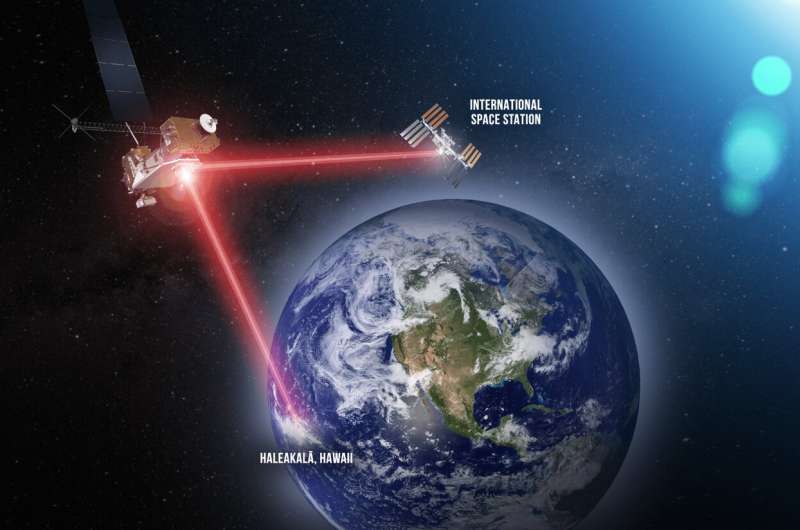
Our televisions and computer screens display news, movies, and shows in high-definition, allowing viewers a clear and vibrant experience. Fiber optic connections send laser light densely packed with data through cables to bring these experiences to users.
NASA and commercial aerospace companies are applying similar technologies to space communications, bringing optical speeds to the final frontier. Free-space optical communications leverages recent advancements in telecommunications to allow spacecraft to send high-resolution images and videos over laser links.
"Free-space" refers to the absence of the insulated, fiber optic cables that enable the terrestrial internet. Free-space laser communications flow freely through the vacuum of space, however atmosphere poses unique challenges to communications engineers.
NASA's Laser Communications Relay Demonstration (LCRD) will send data to and from ground stations and, eventually, in-space user missions over laser links.
"LCRD leverages the work done in the telecommunications industry for the past several decades. We're taking the concepts that they've created and applying them to space," said Russ Roder, product design lead for LCRD's optical module.
Science at the cusp: NASA rocket to study mysterious area above the North Pole
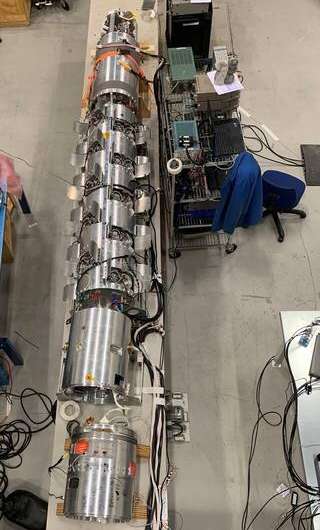
Strange things happen in Earth's atmosphere at high latitudes. Around local noon, when the Sun is at its highest point, a funnel-shaped gap in our planet's magnetic field passes overhead. Earth's magnetic field shields us from the solar wind, the stream of charged particles spewing off the Sun. The gap in that field, called the polar cusp, allows the solar wind a direct line of access to Earth's atmosphere.
Radio and GPS signals behave strangely when they travel through this part of the sky. In the last 20 years, scientists and spacecraft operators noticed something else unusual as spacecraft pass through this region: They slow down.
"At around 250 miles above Earth, spacecraft feel more drag, sort of like they've hit a speed bump," said Mark Conde, a physicist at the University of Alaska Fairbanks and the principal investigator for NASA's Cusp Region Experiment-2, or CREX-2, sounding rocket mission.




